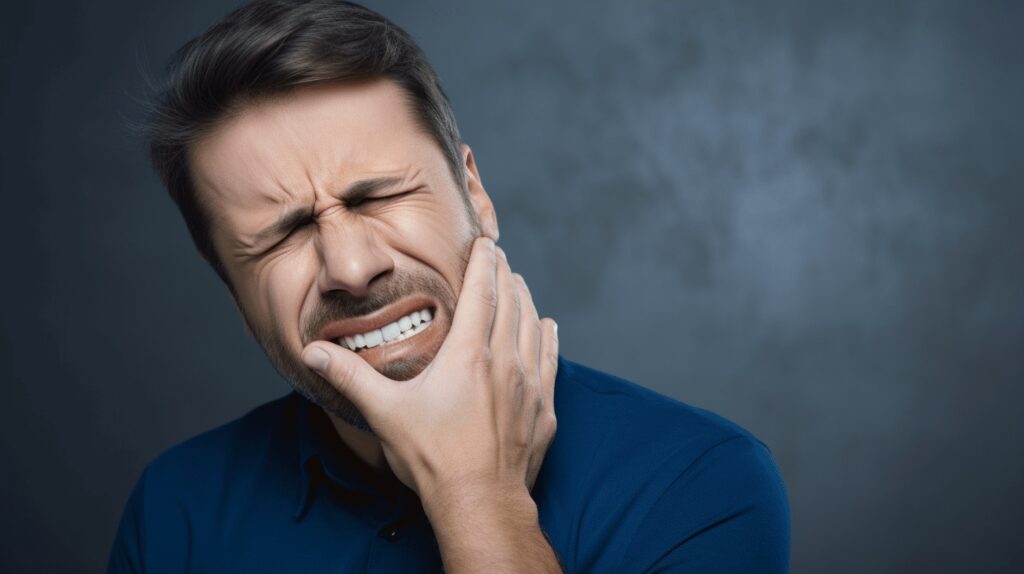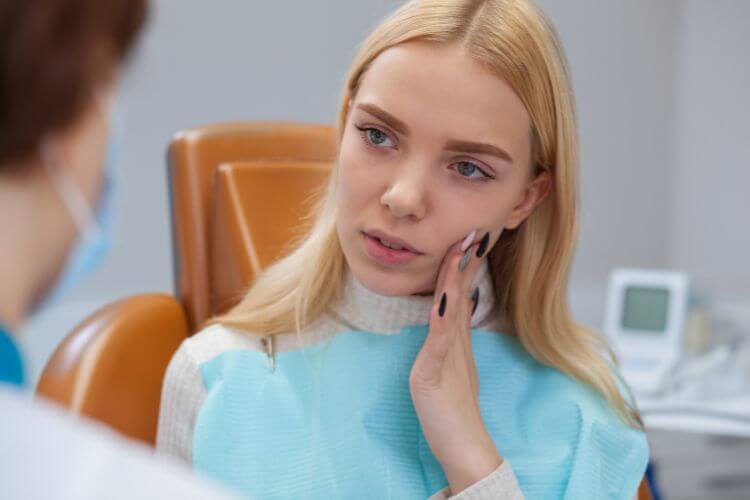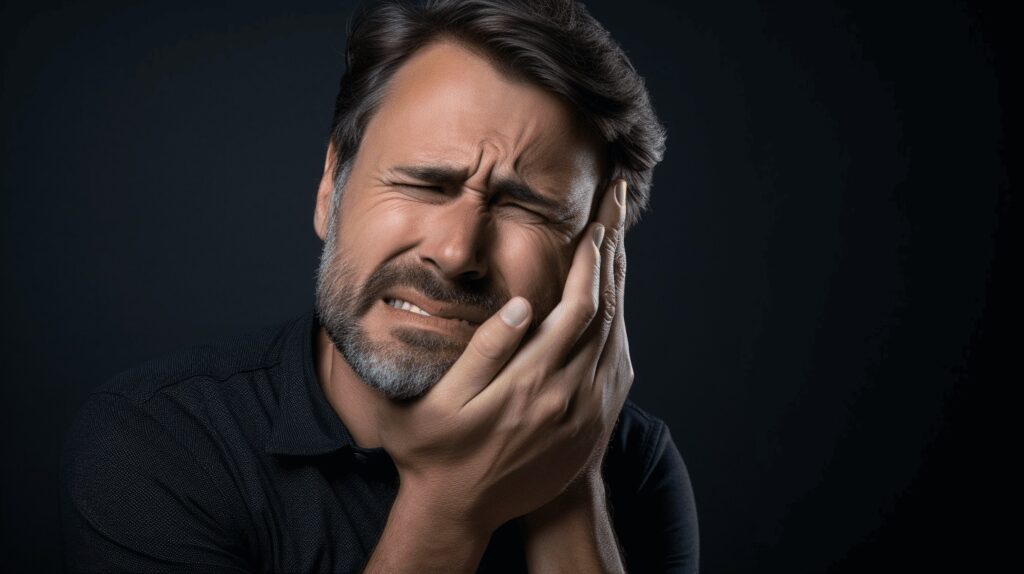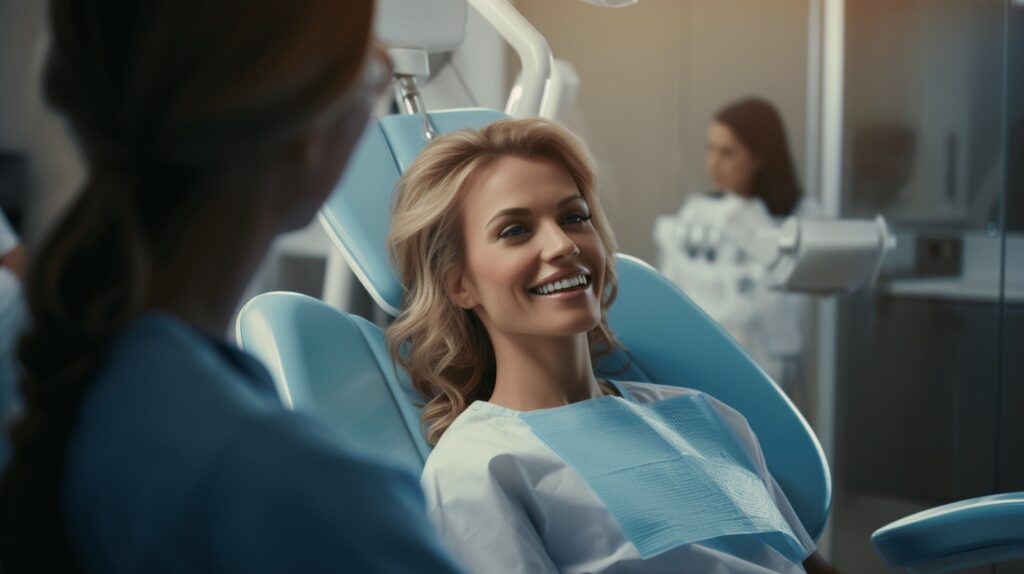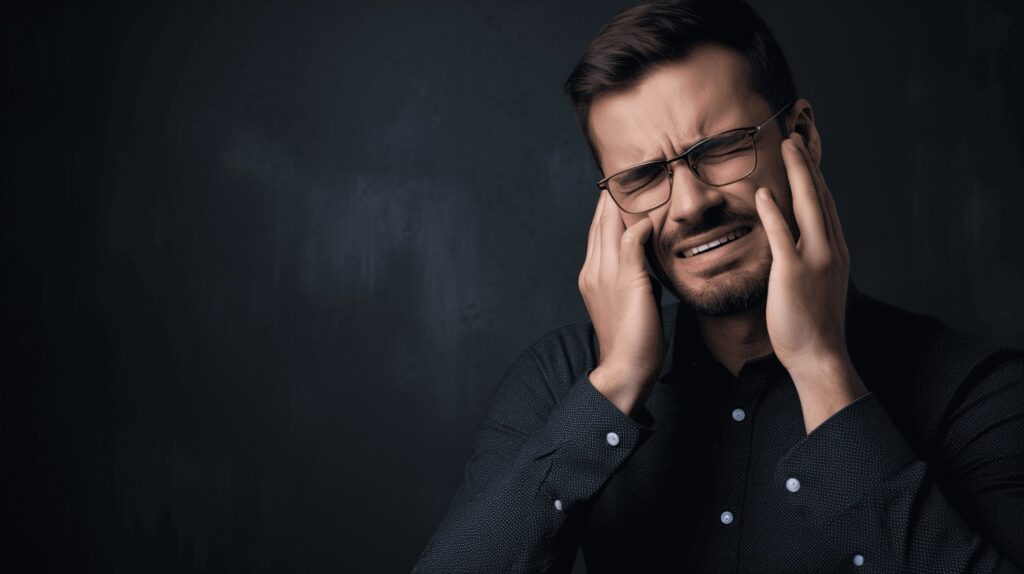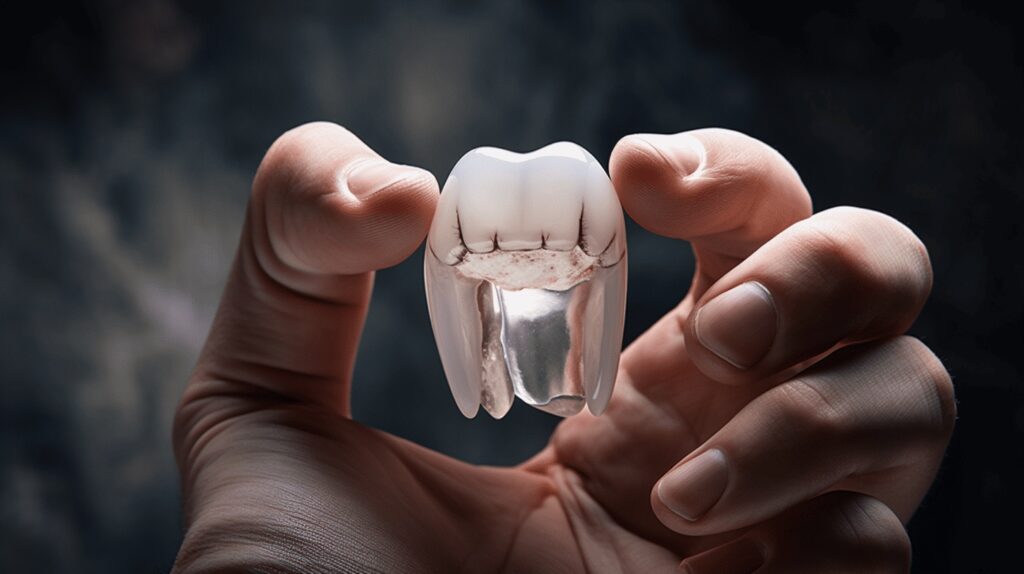In this ever-busy, fast-paced world, oral health often takes a backseat. However, the pain and discomfort accompanying unexpected dental emergencies ⛑️ often make us sit up and take note.
From sudden toothache to a broken tooth, dental emergencies are common and can happen to anyone, anywhere, and at any time. Unfortunately, many people are not prepared to handle these emergencies, leading to unnecessary pain and potential long-term dental problems.
In this article, we shed light on the importance and significance of emergency dental care, and its impact on our healthcare system. We’ll also discuss the common dental emergency situations that you may encounter and provide measures and recommendations to prevent and treat these situations effectively.
A well-informed community can significantly reduce the impact of dental emergencies on our lives and healthcare system. Knowledge, as they say, is power, and this is particularly true when it comes to health-related matters. Remember, preparation and prevention are key to averting dental disasters! 🔑
So, if you’re ready to discover more about emergency dental care, let’s get started on this enlightening journey together. Read on for a wealth of valuable information that will, hopefully, save you and your loved ones from avoidable dental distress. Your smile matters, and we’re here to ensure it remains radiant and healthy! 💖
Table of Contents
Significance of Emergency Dental Care
Your dental health is paramount and is often an overlooked aspect of overall wellness. No one plans for a dental emergency. Still, when one strikes, immediate attention and treatment can make the difference between saving and losing a tooth. Moreover, it reduces the immense pain and discomfort associated with such emergencies. However, what many of us may not realize is the broad-scale impact of these dental emergencies on society. Today, let’s dive into the significance of emergency dental care.
Dental-Related Emergency Department Visits
A surprising number of American citizens find themselves in the emergency department due to dental-related issues. In 2018, there were over 2 million dental-related emergencies reported, according to the Nationwide Emergency Department Sample (NEDS). Severe toothaches, abscesses, infections, mishaps from DIY dental work – you name it! These incidents underscore the need to Seek Immediate Dental Treatment instead of waiting for the situation to spiral out of control.
Lost Productivity and School Hours
Not only are these emergencies distressing, but they also result in significant economic loss. A staggering 34 million school hours are lost each year due to unplanned visits to the dentist, translating into a whopping $45 billion in lost productivity. These numbers reveal the hidden costs of dental emergencies and highlight the importance of regular check-ups to mitigate such crises.
Disparities in Access to Dental Care
Access to dental care is not equal for everyone. Particularly troubling is the fact that 40% of low-income or uninsured adults have untreated cavities. This percentage starkly brings to light the disparities in access to dental care. Clearly, this is an area in need of increased attention and initiatives to ensure that all segments of our society can access and afford dental care.
The bottom line is, dental health is crucial for everybody. It’s high time there’s a shift in mindset from treating dental health as a luxury to viewing it as a necessity – one that deserves our attention and investment. Therefore, let’s ensure our pearly whites always sparkle, not with pain but with health and vitality! 😁👍🏼
Impact on Healthcare System
There is no greater testament to the importance of dental health than its impact on our overall healthcare system. Accessible and consistent dental care is more than just a preventative measure—it significantly influences our overall medical landscape. In essence, good oral health isn’t just about flashing a perfect smile; it’s about reducing the strain on our healthcare resources.
Let us delve into this intricate connection by exploring three critical aspects: Emergency Room Visits for Dental Conditions, Atraumatic Dental Pain, and Geographic Disparities in Dental Care.
Emergency Room Visits for Dental Conditions
Healthcare should be holistic. Dental care is an aspect of health that, despite its importance, often gets relegated to the sidelines, very much like the night shift nurse in a bustling metropolitan hospital. To illuminate this, consider this fact – an estimated 1.15% to 2.5% of all emergency room visits are due to preventable dental conditions.🦷
While the figure might appear small, the ramifications aren’t. Each visit can cost anywhere from hundreds to thousands of dollars, exerting further strain on an already overburdened healthcare system. It’s like the stealthy water leak that might appear insignificant but can flood an entire basement if left unchecked.
Atraumatic Dental Pain
Moving on to our next point of discussion—atraumatic dental pain. Accounting for 1.8% of emergency department visits, this type of pain costs our healthcare system a whopping $2.4 billion annually. That’s equivalent to the gross domestic product of some small nations! This key figure underscores the importance of regular check-ups and preventative interventions in preventing long-term health implications and financial burdens.
Geographic Disparities in Dental Care
Lastly, let’s turn our attention to the geographical disparities in dental care. Picture a vast field with deep furrows—these furrows symbolize the gaps that exist in accessing dental care. A study found that only 57.6% of non-metropolitan adults aged between 18-64 visited the dentist in 2019. The lower the visit rates, the higher the chances of preventable dental issues escalating into emergency room incidents.
The landscape of our healthcare system is an amalgamation of various factors and branches. Dental care holds a pivotal position in this network. By stepping up the focus on regular dental check-ups and preventative care, we can significantly curtail expensive ER visits and the general strain on our healthcare system. Let’s work together to weave the fabric of comprehensive healthcare, complete with shiny dental threads.
Preventive Measures and Recommendations
Taking strides towards protection marks the first step in the journey to maintain oral health. It might seem daunting, but we’re right here to help and guide you. By concentrating on preventive dental measures, you can positively impact your oral health outlook. Not just that, but these steps towards prevention can often prevent more severe dental emergencies before they occur. Exciting, isn’t it?
Preventing Dental Emergencies
The famous saying, “Prevention is better than cure,” 🌟 holds very true in oral health. There are several simple steps that can be taken to prevent situations that require aggressive dental treatments. Let’s go through these steps together:
- Good oral hygiene at home: By brushing and flossing twice a day, you can keep dangerous bacteria at bay and safeguard your teeth from cavities and gum disease.
- Using a night guard for grinding: If you’re a night grinder, wearing a guard can prevent damage to your teeth and jaw.
- Staying hydrated: Drink plenty of water to maintain a healthy saliva balance. Saliva plays an essential role in fighting harmful bacteria 🦠.
- Protecting teeth during physical activities: Using a mouthguard during games and sports can guard your teeth against injury.
In a nutshell, these measures intend to make the health of our teeth and gums an integral part of our lifestyle that doesn’t require too much effort.
Guidelines for Oral Hygiene
Maintaining excellent oral health doesn’t stop at preventing emergencies; it’s all about comprehensive care! Good dental care is like a treasure 💎 map, with various steps that guide us to the sparkling gold—healthy, happy teeth!
So, how about we walk through these steps together? Our blog on Preventive Dental Measures has cherry-picked the most practical and applicable guidelines to help you maintain your oral hygiene like never before.
Remember, taking care of your oral health is an investment, with rewards that go beyond just a beautiful smile, including overall health and well-being 🌟.
Never forget, every giant leap of oral health starts with these tiny preventive steps, so make sure to incorporate them into your daily habits. Let’s begin the journey towards a radiant, healthy smile together! 😊 Happy brushing!
Common Dental Emergency Situations
Going about your daily life with a pain-free smile is something we often take for granted. That is, until the unanticipated occurrence of a dental emergency. Tooth-related issues are no laughing matter and can quickly disrupt your daily life. When it comes to oral health, it’s essential to act promptly and address potential issues before they worsen. This article will tackle some standard emergency dental situations, highlighting the importance of rapid reaction to these dental dilemmas. So, let’s delve into the three most commonly encountered dental emergencies: toothaches, chipped or broken teeth, and infections.
Toothaches 🦷
There’s nothing quite as inconvenient as a sudden spiking toothache. The causes can range anywhere from cavities and worn-out fillings to gum diseases. Sometimes, the severity may indicate an underlying abscess, which is quite dire. If not promptly treated, abscesses may lead to an extensive array of complications, including tooth loss. Remember, we at the Emergency Dental Clinic are always ready to tackle such emergencies.
Chipped or Broken Teeth 😬
One moment you’re biting into your favorite hard candy, the next, you’re dealing with a disconcerting crunch followed by the distressing discovery of a chipped tooth. Alternatively, you could suffer from a broken tooth due to sports injuries or accidental falls. It’s crucial to realize that chipped or broken teeth are not only about cosmetic concern but could escalate into an emergency if left untreated. They pose the risk of tooth decay, infections, and painful complications.
Infections 😷
You can’t exactly put a Band-aid on an infected tooth; the gum swelling and agonizing pain are unmistakable. Oral infections are often linked to an untreated dental disease or a compromised immune system. Neglecting such infections could have dire consequences, including spreading to other areas of the body. That is why professional medical intervention is always recommended for managing these infections.
Keep in mind that maintaining regular oral hygiene is your fort line of defense against these dental emergencies. However, if you find yourself in the throes of a dental emergency, don’t suffer in silence! Reach out to our experienced professionals for immediate attention and the swift return of your shining, pain-free smile.
Collaboration between Medical and Dental Professionals
When we think of healthcare, we usually lump medical and dental care into two distinct categories. However, the increasing body of research shows a clear correlation between oral health and overall well-being. This makes the integration of routine dental care into overall health care a crucial step forward in the healthcare industry.
We’ve all had that toothache that made us realize just how interconnected our bodies really are. This connection often goes far beyond toothaches and headaches. Over the past decade, multiple studies have suggested a strong correlation between oral health and numerous systemic diseases, such as diabetes, heart disease, and Alzheimer’s.
Did you know?
Oral infections can lead to more serious ailments like heart disease and diabetes, indicating the crucial role dentists can play in overall health wellness.
So, it’s time we start practicing integrated healthcare and appreciate the valuable collaboration between medical and dental professionals. Let’s take a quick look at some key benefits derived from this much-needed collaboration:
- Improved Patient Care: Integrated healthcare approaches can aid in diagnosing potential health issues much sooner, resulting in better patient care.
- Early Detection of Diseases: Regular dental check-ups can lead to the early identification and treatment of several health concerns, like oral cancer or gum diseases, that often have severe systemic ramifications.
- Timely Referrals: If a dentist notices a health issue beyond their expertise, a collaborative approach allows for quick, seamless referrals to medical doctors. This ensures patients don’t have to suffer through longer periods of discomfort or pain while searching for specialists.
- Adequate Treatment plans: When medical and dental professionals communicate effectively, they can design more comprehensive and appropriate treatment plans for patients.
By fostering a collaborative environment, medical and dental professionals can bridge the gap between oral and overall health care. This would not only enhance the level of patient care but also propel the healthcare industry towards a more comprehensive and effective healthcare model.
Improving Access to Emergency Dental Services
We’ve all been there. You’re enjoying a nice dinner when, out of nowhere, a sharp tooth pain hits. Or even worse, you’re traveling, far from your trusted family dentist, and a dental crisis raises its ugly head. That’s the last thing you need on your vacation. But fortunately for us, improving access to emergency dental services is on the rise globally. This is a game-changer for tourists who find themselves in dental distress when traveling abroad. Let’s dig deeper.
Increasing Awareness of Oral Health
Community education about oral health is crucial, especially understanding the signs that indicate the need for urgent dental care. Dental emergencies don’t just happen out of the blues;
- A gradual build-up of tooth decay could lead to a painful abscess.
- Failing to address a cracked or chipped tooth potentially results in unbearable discomfort.
- Severe gum disease can cause sudden bleeding and swelling which requires immediate attention.
Knowing when to seek Emergency Dental Services is the first step to improving access to these critical services.
Tech-enabled Dental Care
Technology has been a game-changer in improving access to emergency dental services. The development of tele-dentistry allows for remote dental consultations, ensuring professional advice is just a click away.
- Tele-dentistry: This mode of care allows patients to reach dentists virtually from anywhere in the world. Perfect for tourists experiencing dental emergencies abroad.
- Mobile Apps: Some dental practices now have customized apps. Patients can book appointments, get first-aid tips and communicate with the dental team in real time.
Partnerships with Travel Firms & Hotels
Dental practices are now partnering with travel agencies and hotels to offer emergency dental services as part of travel packages. This not only provides travelers with peace of mind, but also ensures they can quickly get professional help when they need it.
“Having a dentist on speed-dial when traveling can take a massive load off your mind,” says Preet Clair, a family dentist.
Improving access to emergency dental services doesn’t only mean more clinics or dentists. Technology, awareness, partnerships all play a part. And as we continuously work towards better solutions, a dental emergency may soon be nothing more than a minor disappointment, rather than a potential holiday disaster.
Conclusion
In our quest to build healthy communities, it’s important we don’t forget our smiles. Emergency dental care stands as an intrinsic part of our holistic health which can affect our quality of life significantly when neglected. Doing our part to ensure regular dental checkups, practicing healthy oral habits and understanding when to seek for help can keep toothaches and other dental predicaments at bay.
It’s a team effort involving patients, dentists, and healthcare providers; together we can create path-breaking change in emergency dental care. That’s why at the Wilshire Smile Studio, we remain committed to providing timely and quality emergency dental care to ensure that no one has to wrestle with toothaches during bedtimes or go through the day with a broken smile. Together, we can bridge the gap, transform lives, and bring back radiant smiles!
After all, in the face of an emergency, every minute counts – particularly when it comes to preserving your beautiful smile!
Frequently Asked Questions
-
- What are some common dental emergencies?Common dental emergencies include toothaches, broken or chipped teeth, knocked-out teeth, abscesses, and severe gum bleeding.
-
- What should I do if I experience a toothache?If you have a toothache, rinse your mouth with warm water, floss gently to remove any food particles, and apply a cold compress to reduce swelling. It is important to visit a dentist as soon as possible to determine the cause of the toothache and receive appropriate treatment.
-
- How should I handle a knocked-out tooth?If a tooth is completely knocked out, carefully pick it up by the crown (avoid touching the root), rinse it gently with water (do not scrub), and try to reinsert it into the socket. If that is not possible, place the tooth in a container of milk or saliva and go to a dentist immediately.
-
- What can I do for a broken or chipped tooth?If you have a broken or chipped tooth, rinse your mouth with warm water and apply a cold compress to reduce swelling. Visit a dentist as soon as possible for examination and treatment options. Avoid biting or putting pressure on the affected tooth.
- What should I do in case of severe gum bleeding?If you experience severe gum bleeding, rinse your mouth with mild saltwater solution, apply a clean gauze pad or cloth to the bleeding area with gentle pressure, and visit a dentist immediately. Avoid hot foods or drinks, and refrain from brushing or flossing around the affected area until you receive professional advice.


